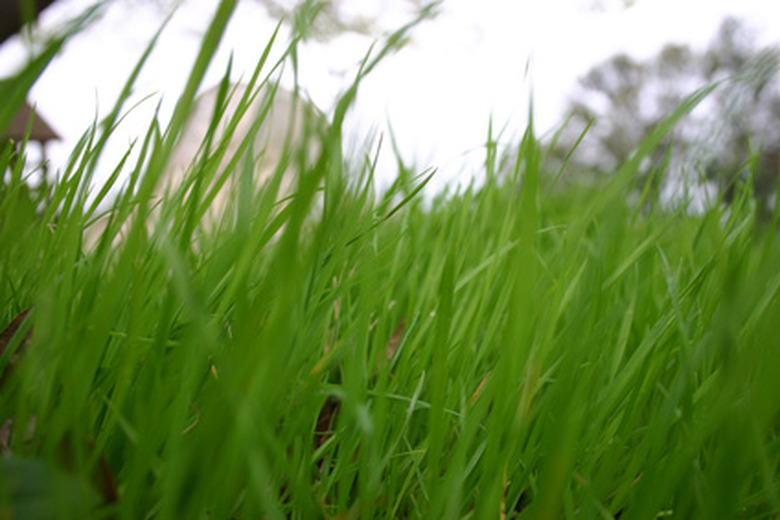The Disadvantages Of Amazoy Zoysia Grass
Amazoy zoysia grass, also known as Meyer zoysiagrass and Z-52, was developed by the United States Department of Agriculture. The most cold hardy of all varieties, it tolerates temperatures to well below zero. Amazoy zoysia grass prefers alkaline soil, and high-nitrogen fertilizers. Given the proper time and care, the Amazoy lawn is tough, with a deep, emerald green color. While Amazoy provides a lush residential lawn, Louisiana State University AgCenter horticulturist Dr. Tom Koske warns that zoysia grass can also be a lot of work.
Establishment
Amazoy grass is propagated not by seed, but generally by plugs. Planting a plug lawn is more labor intensive than starting a seed lawn and it will take longer to establish. In fact, one of the biggest disadvantages of Amazoy zoysia grass is the lengthy establishment period. It can take the plugs 45 days to become established and send up new shoots. Then, it may take up to two growing seasons for the plugs to grow together to form a solid mat, according to turf specialists with the University of Florida. While the plugs are growing together, weeds will pop up between them, so almost constant vigilance is required until the lawn is established.
- Amazoy zoysia grass, also known as Meyer zoysiagrass and Z-52, was developed by the United States Department of Agriculture.
- While the plugs are growing together, weeds will pop up between them, so almost constant vigilance is required until the lawn is established.
Maintenance
Amazoy lawns form a thick thatch layer and require dethatching twice a year. Thatch is a mat of both living and dead grass runners and stems that forms over the soil beneath and between the grass. A certain amount of thatch is normal and healthy for a lawn. Thick layers, however, can block the penetration of moisture and nutrients into the soil. Although Amazoy zoysia grass is more drought-tolerant than other grass varieties, it needs consistent and deep watering. Some of the advertising for the product make claims that lead a gardener to believe that this is a variety to plant and forget, when it is not.
Pests
Amazoy zoysia grass can attract hunting billbugs. These brown or black beetles can cause a lot of damage to the lawn. The larvae feed on the roots while the adult hunting billbug eats the leaves. The damage to the lawn will appear as yellow or brown spots. An insecticide drench is required to manage an infestation. Plant-parasitic nematodes, microscopic worms that live in the soil, tend to favor Amazoy zoysia lawns. They feed on the grass' roots and thrive when the soil is dry and sandy, so irrigation will help limit them. There is no known chemical control for nematodes in residential lawns.
- Amazoy lawns form a thick thatch layer and require dethatching twice a year.
